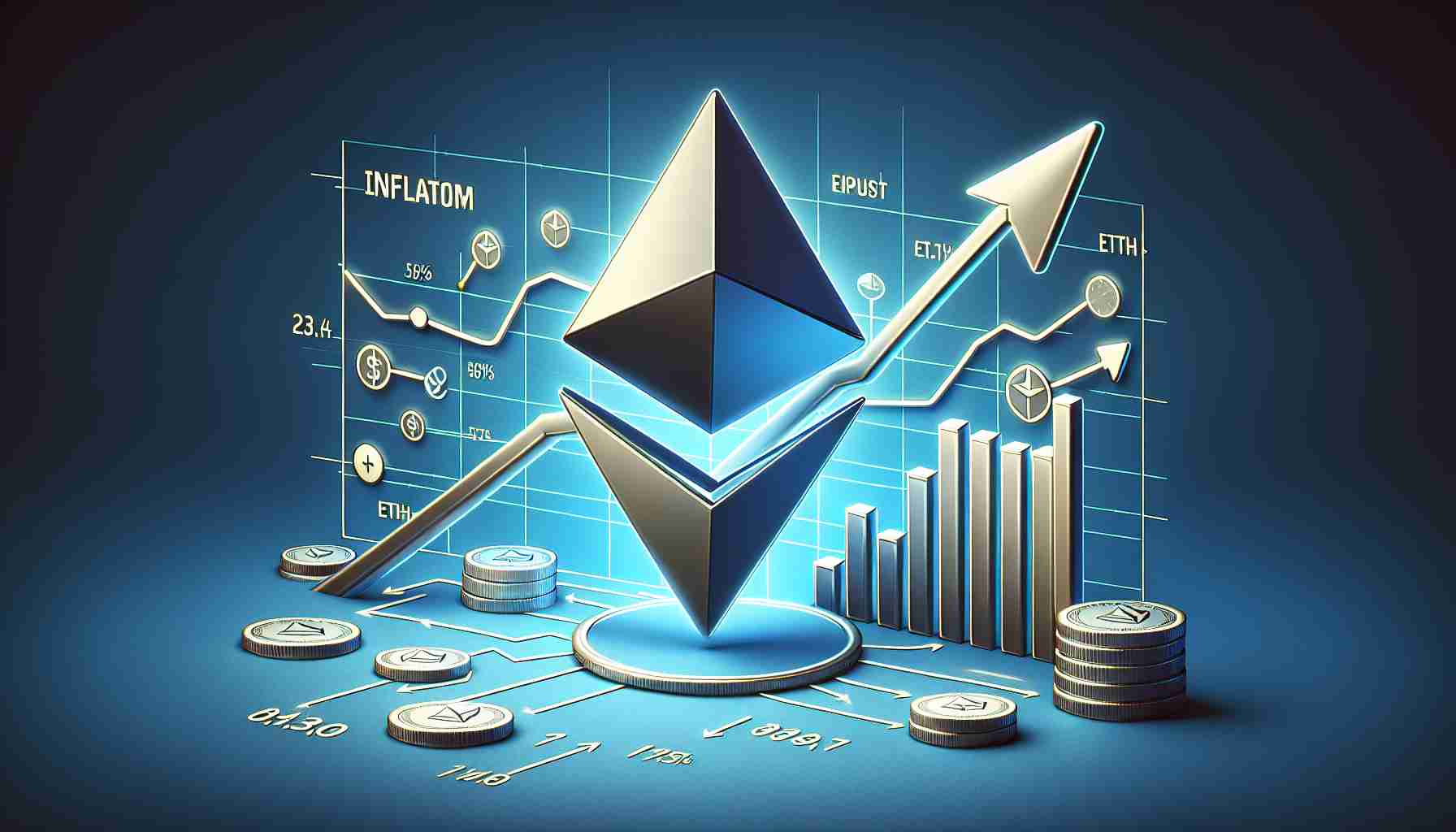Ethereum Experiences Growth in Its Money Supply
Traditionally known for its scarcity-induced economics, Ethereum has recently been charting a new course, exhibiting a distinct uptick in its money supply. As investors maintain a close watch on the digital currency, which currently trades near $3,300, Ethereum has introduced an unexpected inflationary chapter to its narrative.
Despite steadfastly adhering to its established practice of burning a portion of its transaction fees—a procedure enshrined within the Ethereum Improvement Proposal 1559 (EIP-1559)—the total stockpile of Ethereum has nonetheless seen growth. The enlarged supply, particularly noticeable since Ethereum’s network update in March 2023, reflects the increased quantity of Ethereum tokens available.
The aforementioned upgrade, integral to Ethereum’s systematic enhancements, has notably influenced the network’s monetary model. It has resulted in a net increase of over 112,000 ETH in the circulating supply within a span of four months.
Ethereum Keeps Its Deflationary Strategy Intact
The freshly observed inflationary pressure notwithstanding, Ethereum’s overarching trend since undergoing the critical network event known as the Merge remains one of deflation. A substantial total of over 1.7 million ETH has been combusted as a portion of transaction fees, surpassed by the 1.3 million ETH added post-Merge, consequently diminishing the overall pool of ETH by over 344,000 tokens—a promising factor for Ethereum’s market valuation prospects.
Pending Ethereum ETFs Spell Promising Future
The anticipation around Ethereum-based ETFs intensifies as key players in the financial market, such as VanEck, prepare to enter the arena, indicating potential expansion of Ethereum’s market reach. Such developments in regulated investment vehicles for the digital asset market could funnel an influx of institutional and retail capital into the ecosystem, potentially contributing to Ethereum’s deflationary path ahead.
The article discusses the adjustments in Ethereum’s economy, particularly focusing on its shift towards a slightly inflationary model due to a recent update and the ongoing scenario since the implementation of EIP-1559 and the Merge. However, it doesn’t cover some crucial aspects that are relevant to the topic.
Key Questions and Answers:
– What are the reasons behind the increase in Ethereum’s money supply?
The increase in money supply can be attributed to changes in network protocols and updates, such as those associated with Ethereum 2.0 and alterations to the rewards and fees structure. The update mentioned in the article likely fine-tuned parameters that affect issuance and burning.
– What challenges does Ethereum face with this inflationary shift?
Ethereum must balance the benefits of an inflationary model, such as rewarding miners (or validators in Ethereum 2.0) for securing the network, with the risk of devaluing existing ETH holdings. It also faces the challenge of keeping the inflation rate at an optimum level that encourages investment without causing excessive inflation.
– Are there controversies associated with these monetary policy changes?
Yes, changes in the issuance rate or fee structure can be controversial within the Ethereum community as they affect stakeholders differently. Miners, investors, and users all have varying interests that can lead to disagreements over such changes.
Advantages and Disadvantages:
– Advantages:
The inflation may incentivize validators in the new proof-of-stake model, contributing to network security. Additionally, a moderate increase in supply can accommodate the growing ecosystem without causing significant inflationary pressures.
– Disadvantages:
Increased money supply could potentially dilute the value of existing ETH holdings and may lead to concerns over long-term inflation. This can undermine the scarcity aspect that often drives demand for cryptocurrencies.
While the article touches on institutional investment via potential ETFs, it does not delve deeper into the broader implications of monetary inflation on Ethereum’s role as a platform for decentralized finance (DeFi) and smart contracts, nor does it discuss the impacts on scalability and transaction costs.
For further information, here are some related main domain links:
– Ethereum’s official website for updates and resources: Ethereum.org
– VanEck’s main domain for information on their investment products: VanEck
It’s important to note that developments in Ethereum’s monetary policy, scaling solutions, and upgrades such as the Merge can all have intricate impacts on the broader cryptocurrency economy and Ethereum’s position as a leading blockchain platform.



